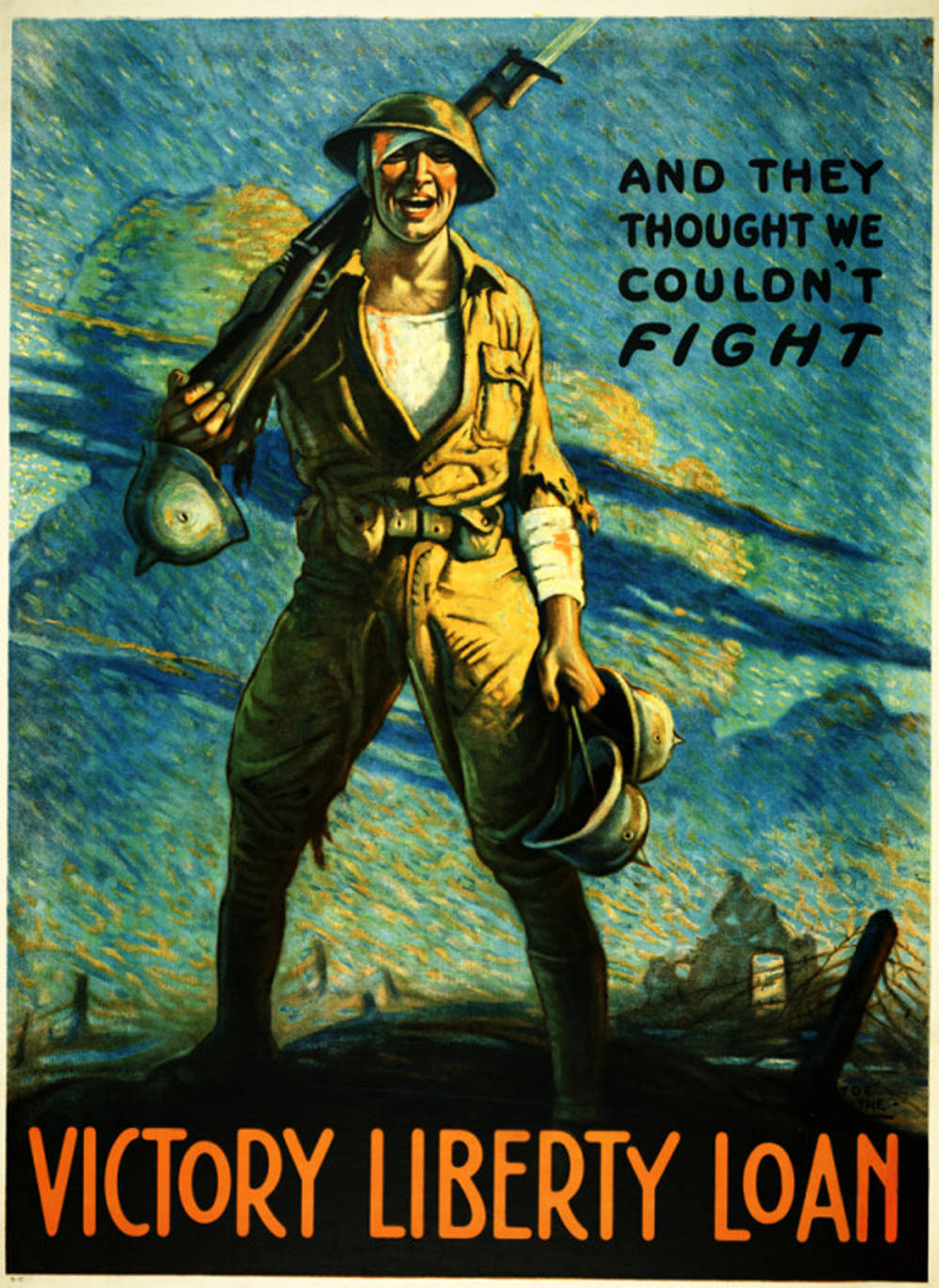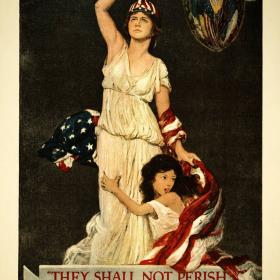Doughboy
By 1917, the image of the doughboy was well known even if the nickname was not yet in widespread use.
He was the brave fighting man of the United States. In his unique uniform and steel helmet, he boldly marched off to save democracy. As a symbol, the doughboy was a powerful propaganda tool.
The origins of the nickname “doughboy” for United States infantryman are unknown. The earliest written reference to the doughboy appears during the Mexican-American War (1846-1848). The term was used sparingly during the American Civil War (1861-1865) and other conflicts in the nineteenth century. One theory as to the origins of the name is that it was based on a doughy type of food eaten by U.S. troops. Another theory stems from infantrymen looking like they were covered in flour after marching in the arid southwest. Regardless of the origins, the nickname began as a derogatory term used to describe the lowly foot soldier who had to march from place to place as opposed to the cavalrymen riding horseback.
At the beginning of World War I (1917-1918) United States soldiers were known to Europeans as Yanks or Sammies. However, the infantrymen appear to have adopted the name “doughboy” for themselves and promoted its use. The lowly foot soldiers turned the term into one of honor. Eventually the name spread to encompass all men who were fighting in the war regardless of branch of service. After the war, the name became exclusive to veterans of the Great War as no future generations of United States soldiers would use it.

